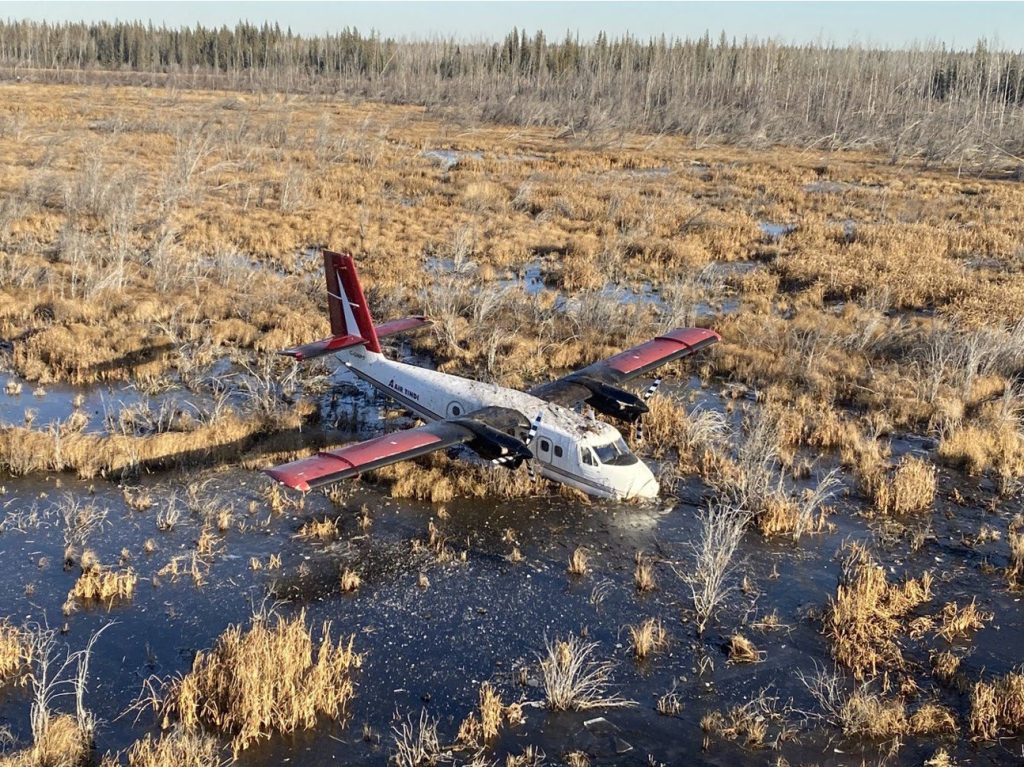Fuel Starvation – impossible, or not…

In November 2021, a Canadian DHC6 on a scheduled domestic passenger flight from Yellowknife to Fort Simpson departed with insufficient fuel and without the crew checking the fuel quantity on board. Before start and throughout the flight, there were numerous opportunities to identify the mistake and rectify the problem in time, but all were missed owing to a series of avoidable errors. En route, when the crew finally realised that there wasn’t enough fuel to make the intended destination, they attempted to divert to the nearest available airport at Fort Providence. Poor management of the remaining fuel then made this option impossible. When fuel was exhausted, a forced landing was made at night into a partly frozen, treeless bog. The aircraft sustained substantial damage but amazingly the 5 occupants only suffered minor injuries, related to hypothermia. The complete investigation into how a fully serviceable aircraft ran out of fuel and ended up in a bog can be read in the TSBC Final Report. There follows a few of the findings from the investigation and some suggested Human Factor safety links which might be worth reading from the perspective of ‘could this happen to me or in my company?’
Findings as to Causes, Contributing Factors and Risk
- When the Captain saw the pink fuel slip in the door of the aircraft, it reinforced his belief that the aircraft had been fuelled for the last flight of the day, when, actually, it had not been refuelled. Assumption and confirmation bias.
- While conducting the ‘Before Start’ checks from memory, the Captain interrupted his routine by conversing with a passenger. Consequently, the fuel quantity check was missed and the preparation for flight continued without the Captain being aware that the aircraft did not have sufficient fuel for the flight on board. Distraction.
- Over time, the Captain had developed an adaptation of not conducting the challenge and response checklists where required by the standard operating procedures (SOPs). The absence of negative consequences reinforced the Captain’s practice, until it became routine. Normalisation of deviance and poor safety culture.
- On the day of the occurrence, the First Officer’s adaptation regarding checklist usage was influenced by the seniority of the Captain, the Captain’s non-standard use of checklists, and the absence of negative repercussions from this adaptation. Absence of challenge culture and practical drift.
- While taxiing to the runway, the Captain conducted the Taxi Checks alone, silently and from memory. Consequently, the fuel check on the checklist was missed and the aircraft departed with insufficient fuel for the flight. Lack of adherence to SOPs, cross checking and verification.
- The First Officer completed the Cruise Checks silently and without reference to a Checklist. As a result, the fuel state of the aircraft was not identified by either pilot. Lack of adherence to SOPs and questioning culture.
- If flight crews do not maintain a scan of the flight instrument panel and alerting systems, there is a risk that they will not identify an abnormal aircraft state that escalates to an unsafe situation. Get the basics right.
- If flight crews do not use the company reporting procedures to communicate safety concerns related to operational deviations, there is a risk that company management will be unaware of unsafe practices and unable to take corrective action. Unsafe practices should always be challenged and reported; consider using the CHIRP confidential reporting option if uncomfortable or unable to use company or CAA reporting systems.